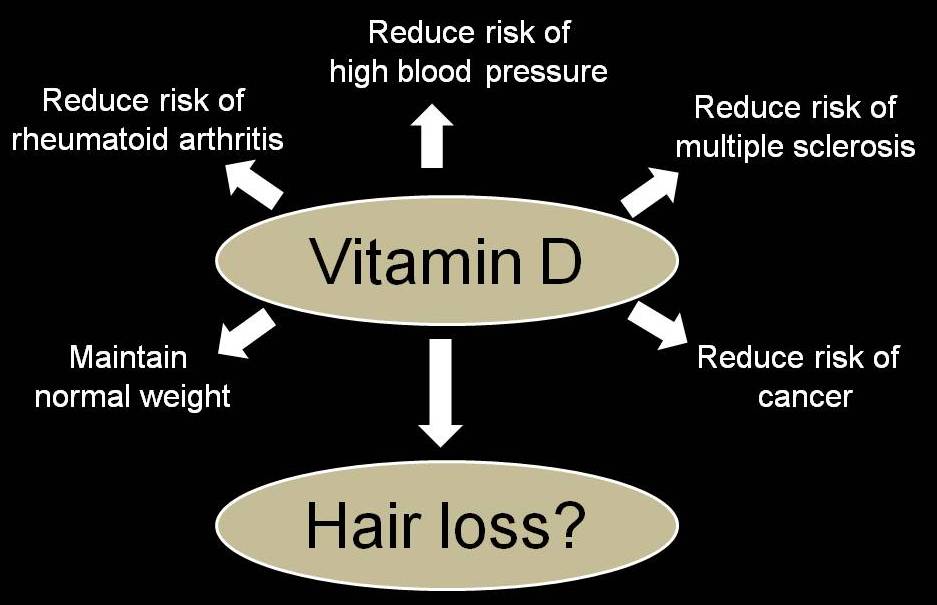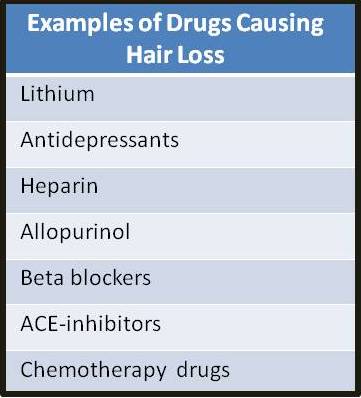Vitamin D and Hair Loss: Does Low Vitamin D cause Hair Loss?
Vitamin D is a popular topic of discussion. Each and every day, we learn more and more about the potential benefits of vitamin D. For example, vitamin D seems to help protect against developing certain types of cancers and it may even reduce the risk of developing neurological problems such as multiple sclerosis. The list of potential benefits of vitamin D is quite long, and a few are shown in the accompanying diagram. The vitamin D story is an important topic, especially since so many of us are deficient in vitamin D.
But what role, if any, does vitamin D have in hair functions? Do individuals with low blood levels of vitamin D have hair loss?
There is no definitive research to suggest that low vitamin D causes hair loss. We simply don’t know if it does or does not. Furthermore, we don’t really know if low levels of vitamin D might have a negative impact on hair growth. Certainly, there is accumulating evidence that vitamin D has some importance for normal hair function.
To understand how vitamin D works, it’s important to understand a few things. First, in order for vitamin D to do its job inside our cells, it usually needs to attach to the so called “vitamin D receptor”. Once vitamin D binds to the vitamin D receptor a series of changes happen deep within our cells.
We know that severe abnormalities in vitamin D can certainly be associated with hair loss. For example, children born with a condition known as type IIa vitamin D dependent rickets inherit a defect in the vitamin D receptor. These children have normal hair in the first few months after birth but then slowly lose hair around 3 months of age. Many of these children have complete loss of all their hair. This provides us with some information that vitamin D is important for hair growth.
There is additional scientific evidence that vitamin D has importance in hair growth. Nowadays we can create a mouse in the laboratory that lacks the vitamin D receptor. These mice are born with hair but then lose it after birth and are completely bald by age 8 months.
To date, there are only a few studies evaluating the role of vitamin D in human hair loss. Some studies have shown that vitamin D when applied topically to the scalp can reduce the chance of cancer patients developing hair loss after being given certain types of chemotherapy. However, this was found to be true only for some types of chemotherapy and vitamin D could not prevent hair loss following receipt of other types of chemotherapy.
We don’t really understand all the functions of vitamin D as it relates to hair growth and hair loss. Furthermore, we don’t really know if low vitamin D has any association with hair loss. However, vitamin D is probably pretty important when it comes to overall hair health. So until we learn more about vitamin D by doing more research, it probably makes sense that patients with hair loss strive for normal levels of vitamin D.
This article was written by Dr. Jeff Donovan, a Canadian and US board certified dermatologist specializing exclusively in hair loss.












